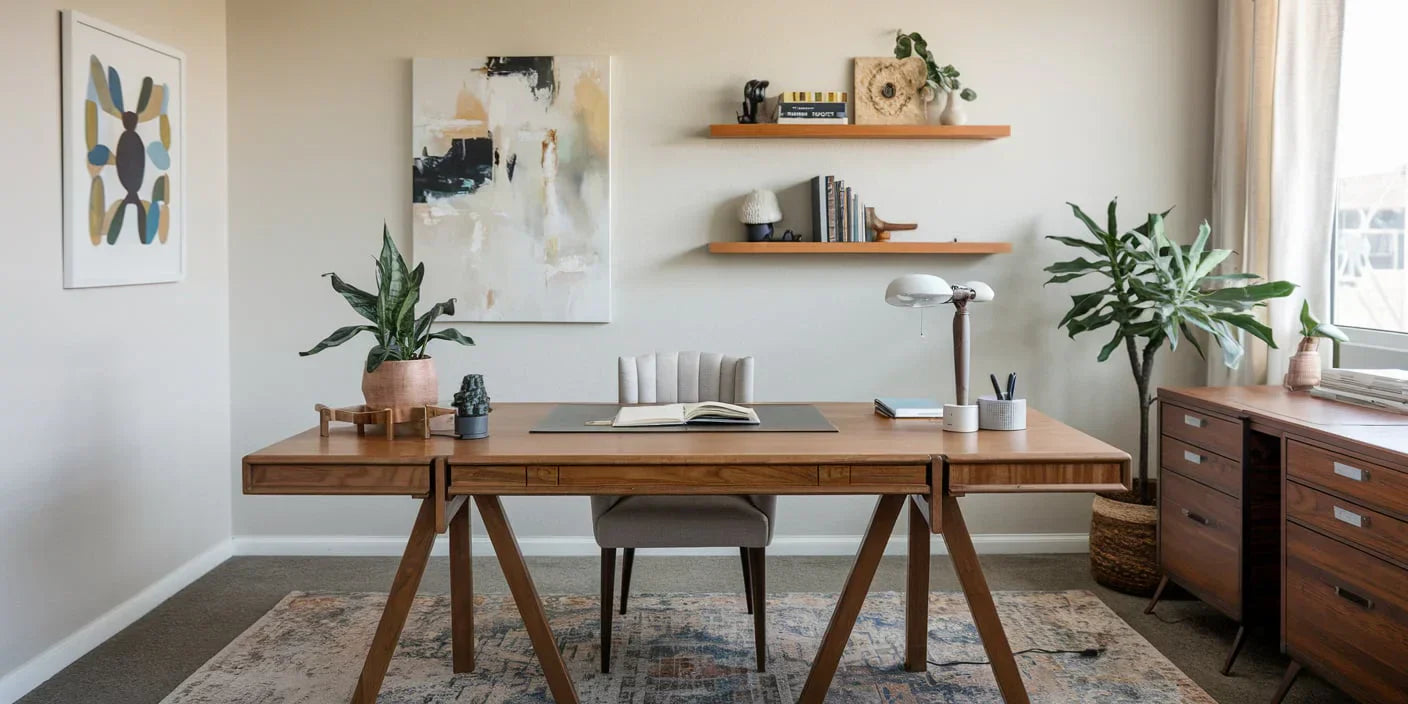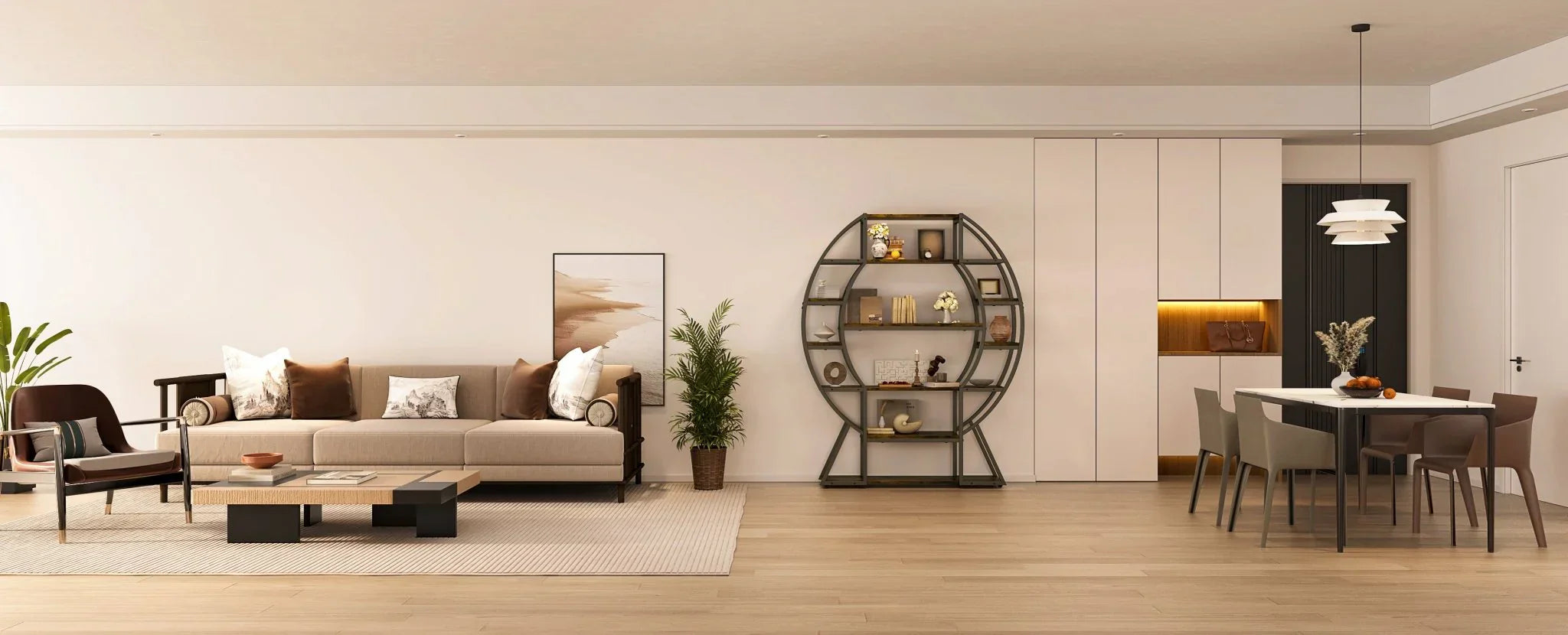If you're furnishing a home or embarking on a DIY project in the UK, you've likely encountered MDF. It's a staple in British furniture-making and interiors, prized for its versatility and value. But what exactly is it, and is it the right choice for your needs?
This guide will walk you through everything you need to know about Medium-Density Fibreboard, from its composition and benefits to its limitations, helping you make an informed decision for your space.
1. What is MDF Wood?
MDF, or Medium-Density Fibreboard, is an engineered wood product. It's created by breaking down hardwood or softwood residuals into fine fibres, combining them with a resin binder, and forming panels under high heat and pressure. The result is a remarkably dense, smooth, and uniform board with no knots or natural grain.

This consistency makes MDF a favourite for applications where a seamless, paintable finish is desired, such as in modern cabinet fronts, sleek shelving, and decorative mouldings like skirting boards and architraves commonly found in UK homes.
2. Advantages and Disadvantages of MDF
Like any material, MDF has its strengths and weaknesses. Understanding these is key to using it effectively.
Advantages of MDF:
- Superior Surface for Painting: Its non-porous, smooth surface takes paint exceptionally well, resulting in a flawless, professional finish without grain or knots showing through.
- Cost-Effective: Typically more affordable than solid wood or high-grade plywood, making it an excellent choice for budget-conscious furniture and projects.
- Consistency and Stability: Unlike natural wood, MDF is uniform throughout, meaning it's less prone to warping or splitting.
- Ease of Machining: It can be easily cut, routed, and shaped for detailed designs, from simple shelving to intricate furniture profiles.

Disadvantages of MDF:
- Susceptibility to Moisture: Standard MDF can swell and weaken if exposed to significant moisture or dampness, so it's not suitable for bathrooms or kitchens unless a moisture-resistant type is used.
- Weight: MDF panels are notably heavy, which can be a consideration for large furniture pieces.
- Lower Screw-Holding Strength: Fasteners can loosen over time if not installed correctly with pilot holes and appropriate screws.
- Dust Creation: Cutting MDF produces fine dust, so proper safety gear like a mask and good ventilation are essential when working with it.
3. Common Uses for MDF in the Home
MDF's versatility makes it incredibly popular for a range of interior applications:
- Ready-to-Assemble (RTA) Furniture: Ideal for bookshelves, desks, and TV stands where a smooth, painted finish is key.
- Kitchen Cabinetry: Often used for painted cabinet doors and panels.
- Interior Mouldings: Skirting boards, coving, and other decorative trims.
- Door Cores: Provides a stable, smooth base for interior doors.
- DIY Projects: A go-to material for homeowners creating custom shelving, built-in storage, or other home improvements.

4. Different Types of MDF Boards
To suit different needs, several types of MDF are available:
- Standard MDF: For general interior use in dry conditions.
- Moisture-Resistant (MR) MDF: Treated to withstand humidity, making it suitable for use in kitchens or bathrooms.
- Fire-Retardant (FR) MDF: Designed to meet specific fire safety regulations in commercial or residential buildings.
- Lightweight MDF: A lighter variant that is easier to handle but offers slightly less structural strength.
5. Expert Tips for Working with MDF
- Always Seal the Edges: Use a specialist MDF sealer or primer on all cut edges before painting to prevent moisture absorption and ensure a smooth finish.
- Pre-Drill for Screws: Always pre-drill holes to avoid splitting the material and ensure a secure hold.
- Support Long Spans: For shelves, ensure adequate support to prevent sagging under weight.
- Prioritise Safety: Wear a dust mask and use extractor fans when cutting or sanding MDF.
6. Conclusion: Is MDF Right for You?
MDF is a reliable, cost-effective, and highly adaptable material that is excellent for creating stylish, painted furniture and interior details. Its smooth finish and consistency are unmatched for achieving a modern, uniform look.
At Tribesigns, we strategically use MDF in our furniture collections where its properties shine—such as in smooth, contemporary cabinet panels and shelves. We focus on quality, and many of our products utilise low-emission, E0-grade MDF to ensure better indoor air quality for your home.
We believe in transparency, so you can find detailed material specifications for each product on our website.



